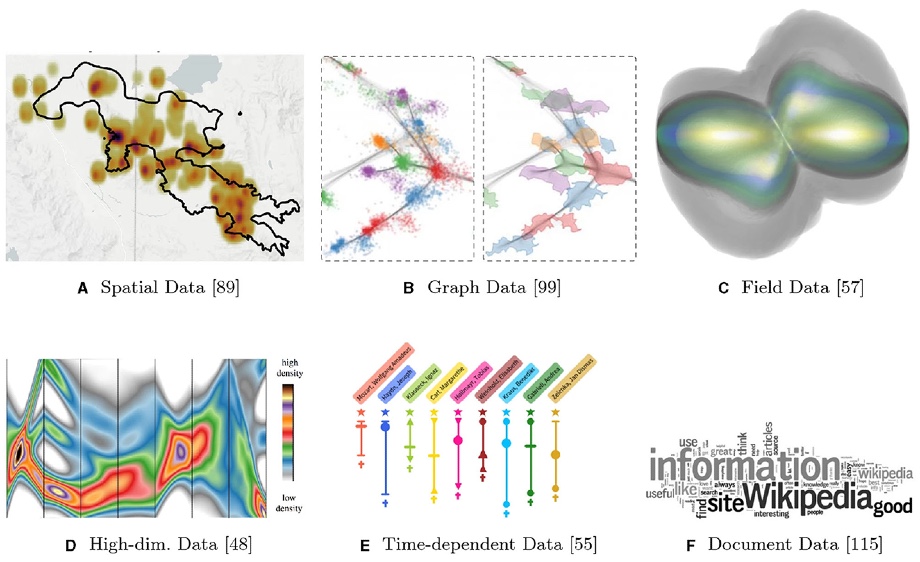New Publication
Uncertainty in humanities network visualization
Frontiers

Melanie Conroy, Christina Gillmann, Francis Harvey, Tamara Mchedlidze, Sara Irina Fabrikant, Florian Windhager, Gerik Scheuermann, Timothy R. Tangherlini, Christopher N. Warren, Scott B. Weingart, Malte Rehbein, Katy Boerner, Kimmo Elo, Stefan Jaenicke, Andreas Kerren, Martin Noellenburg, Tim Dwyer, Øyvind Eide, Stephen Kobourov and Gregor Betz
Abstract
Network visualization is one of the most widely used tools in digital humanities research. The idea of uncertain or “fuzzy” data is also a core notion in digital humanities research. Yet network visualizations in digital humanities do not always prominently represent uncertainty. In this article, we present a mathematical and logical model of uncertainty as a range of values which can be used in network visualizations. We review some of the principles for visualizing uncertainty of different kinds, visual variables that can be used for representing uncertainty, and how these variables have been used to represent different data types in visualizations drawn from a range of non-humanities fields like climate science and bioinformatics. We then provide examples of two diagrams: one in which the variables displaying degrees of uncertainty are integrated/pinto the graph and one in which glyphs are added to represent data certainty and uncertainty. Finally, we discuss how probabilistic data and what-if scenarios could be used to expand the representation of uncertainty in humanities network visualizations.